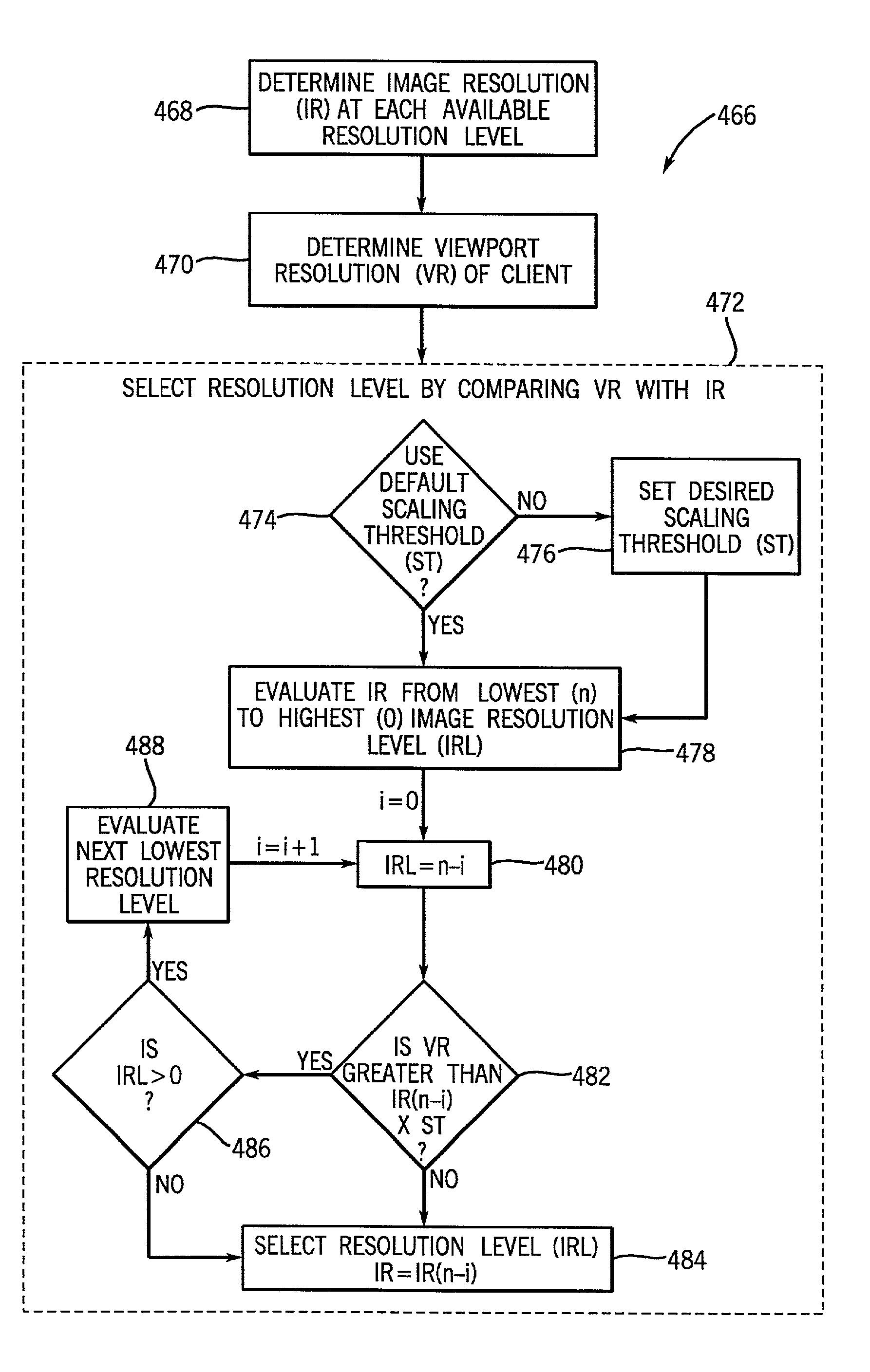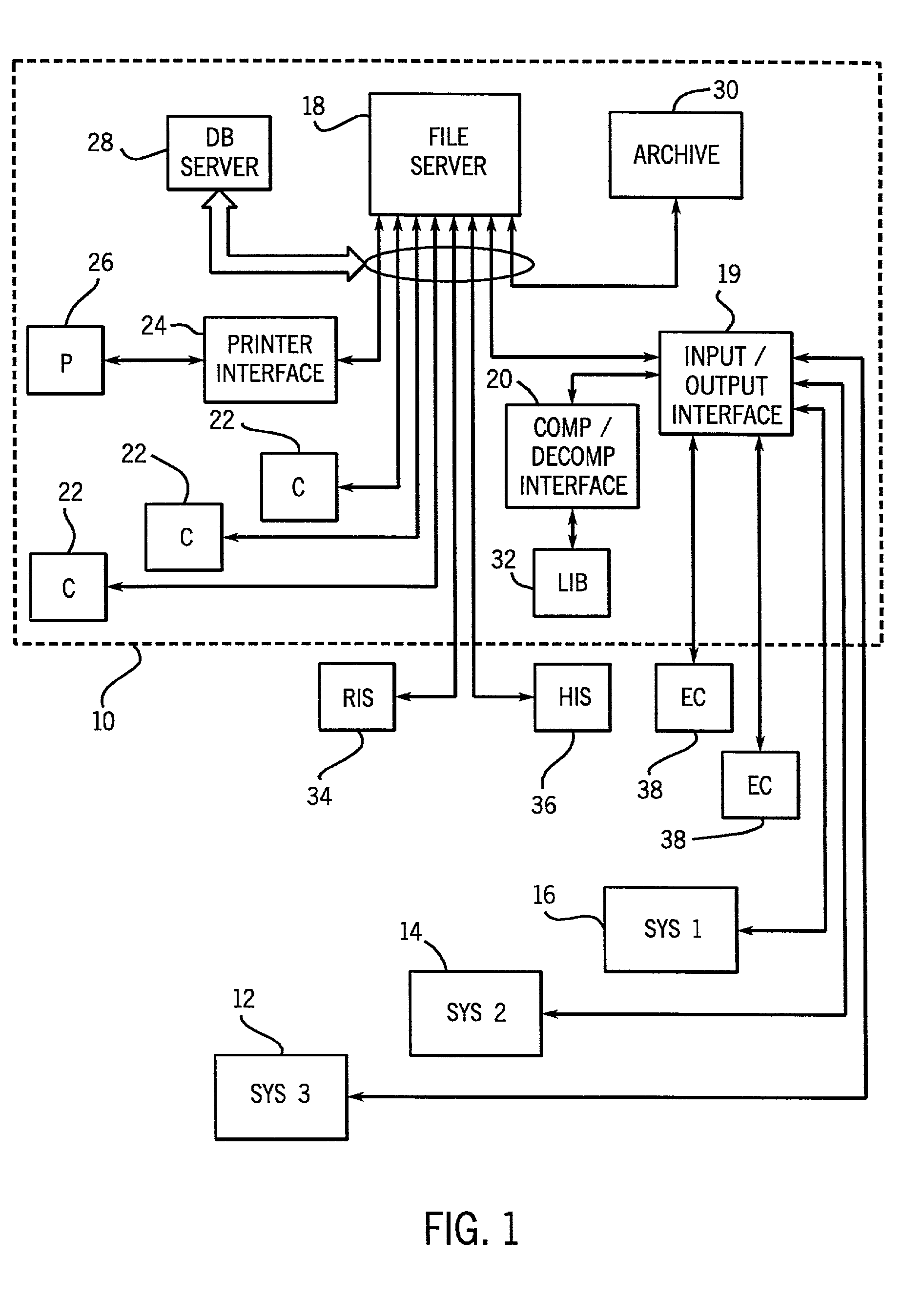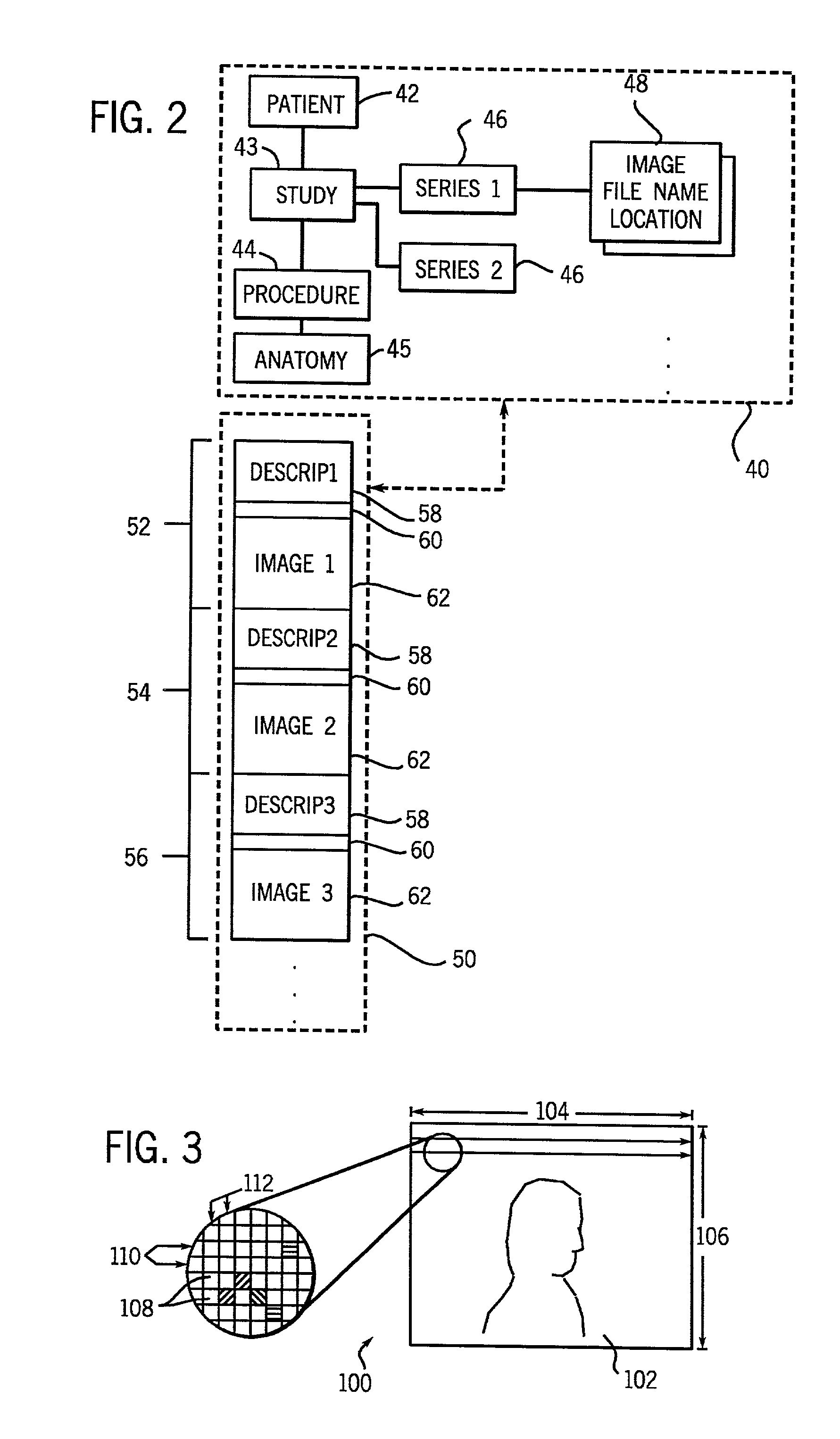Method and apparatus for transmission and display of a compressed digitized image
- Summary
- Abstract
- Description
- Claims
- Application Information
AI Technical Summary
Benefits of technology
Problems solved by technology
Method used
Image
Examples
Embodiment Construction
[0036]FIG. 1 illustrates an exemplary image data management system in the form of a picture archive and communication system or PACS 10 for receiving, compressing and decompressing image data. In the illustrated embodiment, PACS 10 receives image data from several separate imaging systems designated by reference numerals 12, 14 and 16. As will be appreciated by those skilled in the art, the imaging systems may be of various type and modality, such as magnetic resonance imaging (MRI) systems, computed tomography (CT) systems, positron emission tomography (PET) systems, radio fluoroscopy (RF), computed radiography (CR), ultrasound systems, and so forth. Moreover, the systems may include processing stations or digitizing stations, such as equipment designed to provide digitized image data based upon existing film or hard copy images. It should also be noted that the systems supplying the image data to the PACS may be located locally with respect to the PACS, such as in the same institu...
PUM
 Login to View More
Login to View More Abstract
Description
Claims
Application Information
 Login to View More
Login to View More - R&D
- Intellectual Property
- Life Sciences
- Materials
- Tech Scout
- Unparalleled Data Quality
- Higher Quality Content
- 60% Fewer Hallucinations
Browse by: Latest US Patents, China's latest patents, Technical Efficacy Thesaurus, Application Domain, Technology Topic, Popular Technical Reports.
© 2025 PatSnap. All rights reserved.Legal|Privacy policy|Modern Slavery Act Transparency Statement|Sitemap|About US| Contact US: help@patsnap.com



